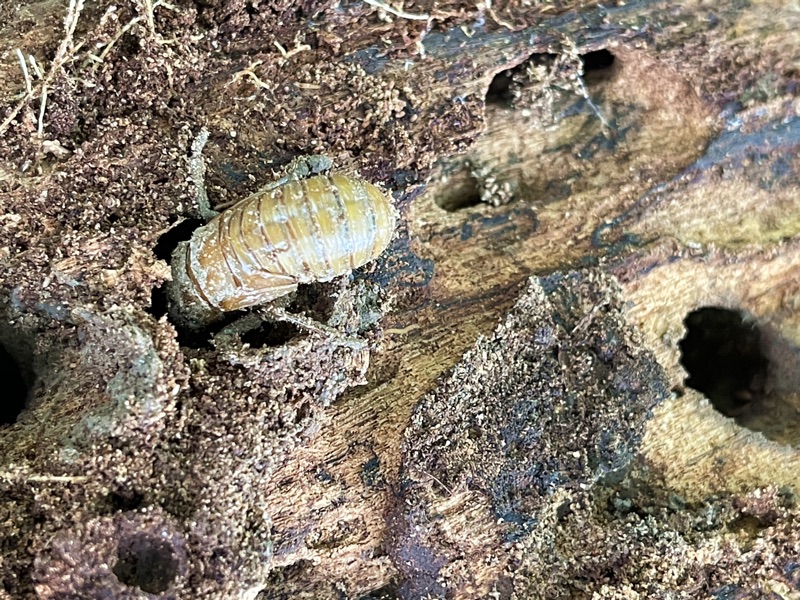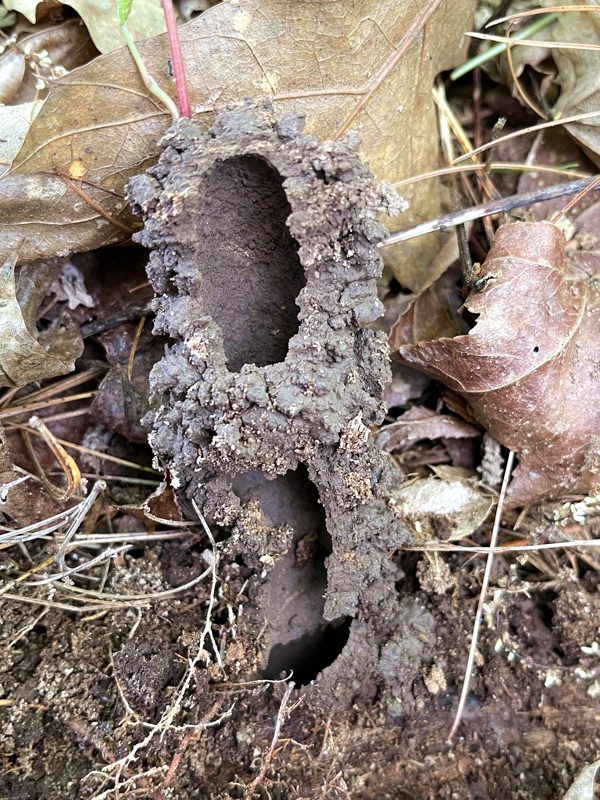Here are some Magicicada cassinii photos from Brood X, 2021, Flemmington, New Jersey.
Magicicada cassinii ovipositing
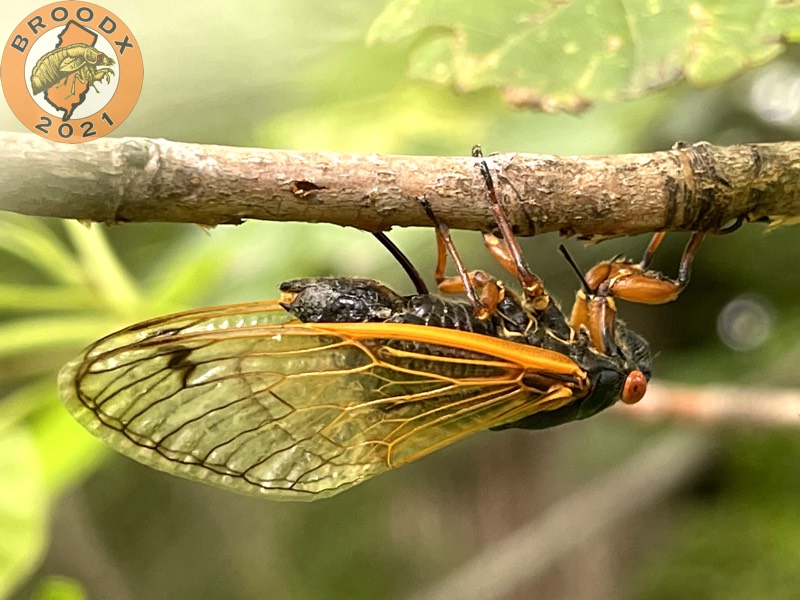
M. cassinii taking a drink:
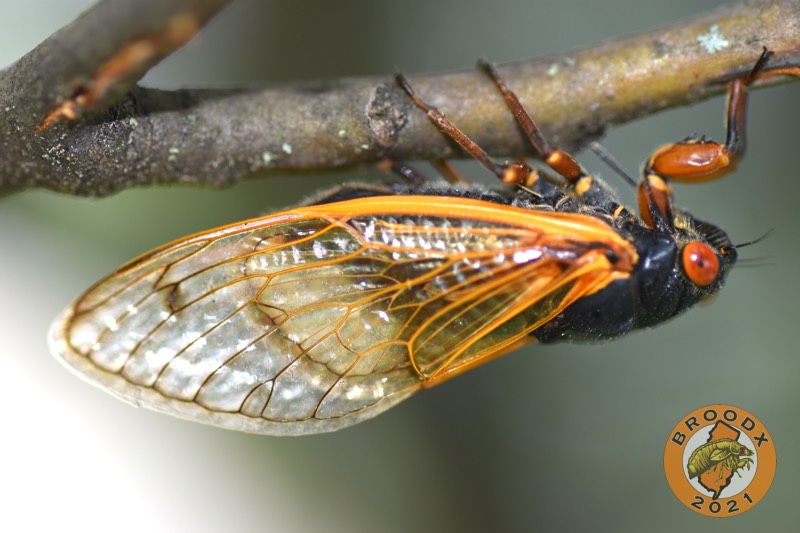
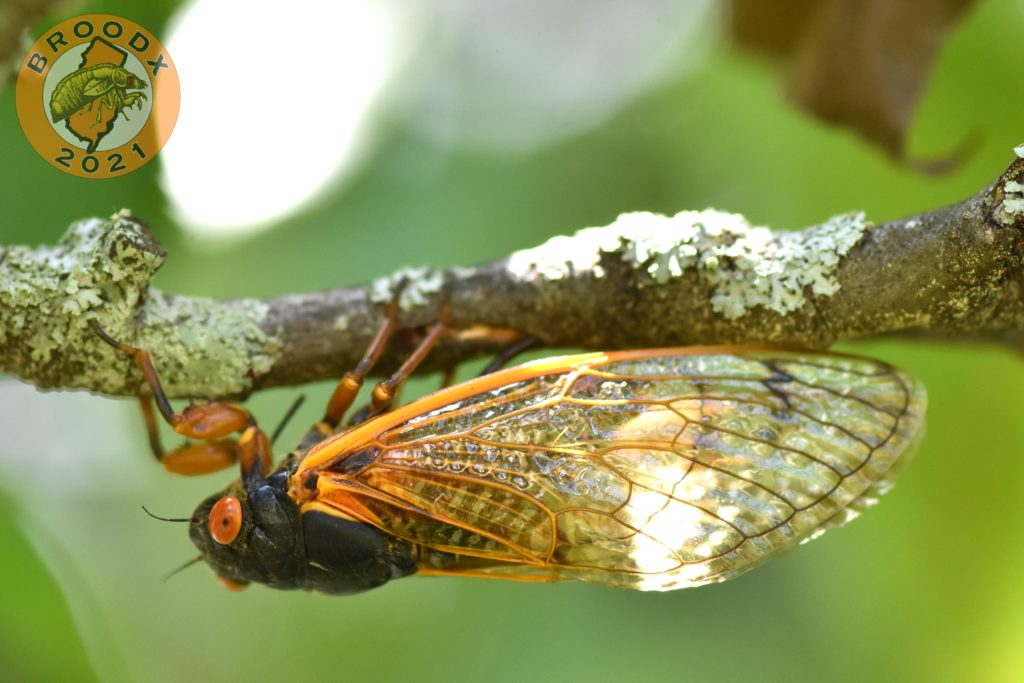
Magicicada periodical cicada Broods.
Here are some Magicicada cassinii photos from Brood X, 2021, Flemmington, New Jersey.
Magicicada cassinii ovipositing

M. cassinii taking a drink:


These are a set of Brood X Magicicada photos from Princeton, nearby a Burger King, an area with a large population of Magicicada septendecula. Taken in 2021 by Dan Mozgai.
Left to right: Magicicada cassini, Magicicada septendecula, Magicicada septendecim:
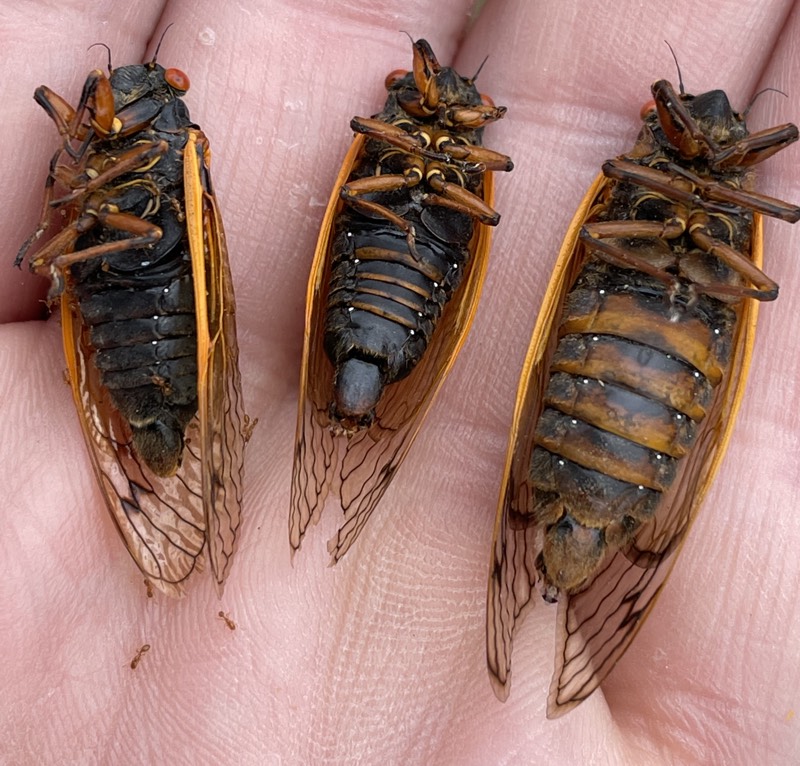
Magicicada septendecim with a black wing margin:
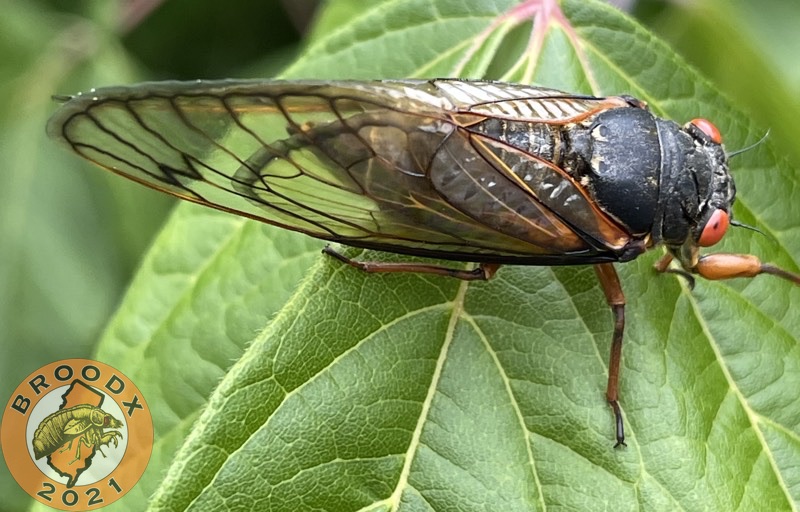
Magicicada septendecim with a black wing margin:
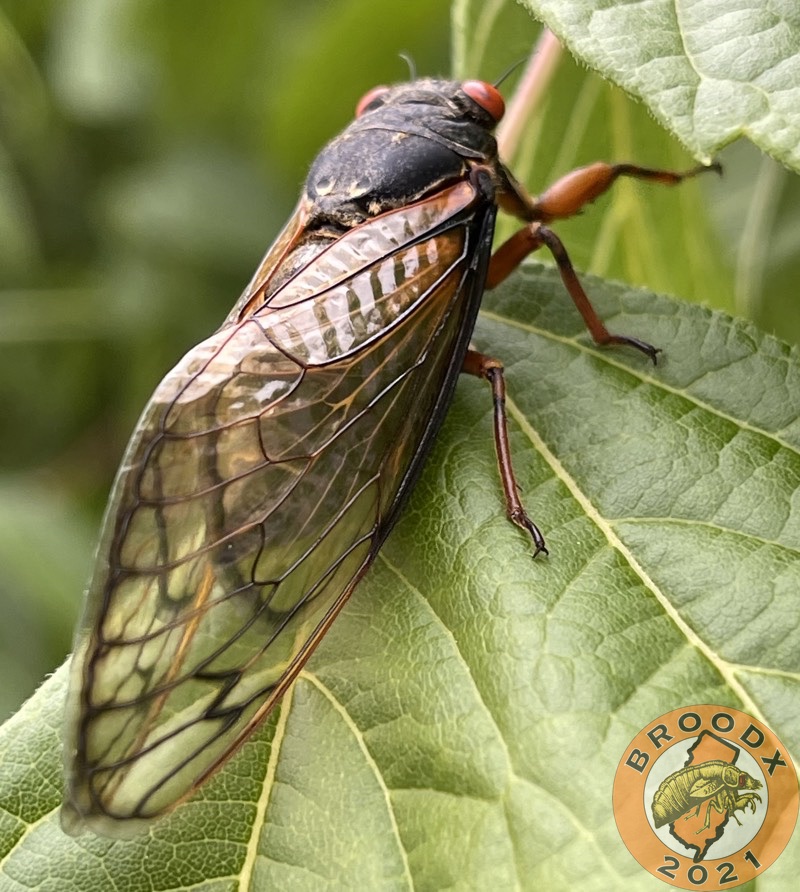
A pair of Magicicada septedecim:
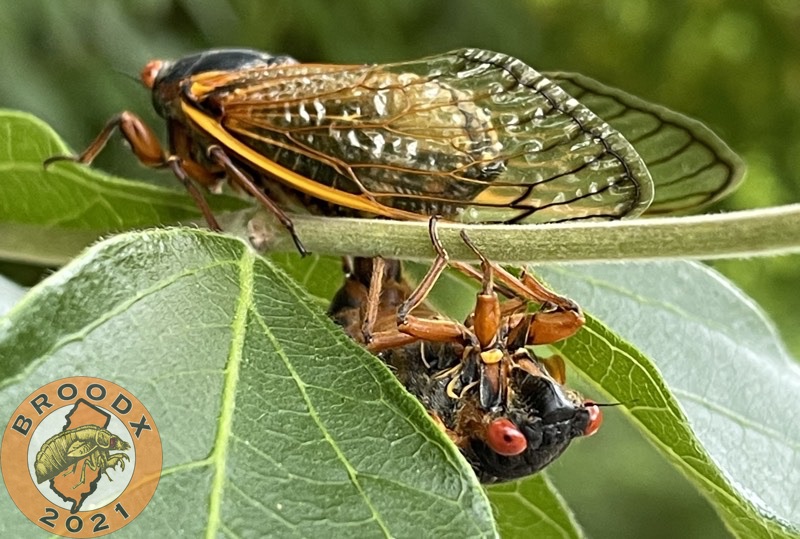
Magicicada septendecim:
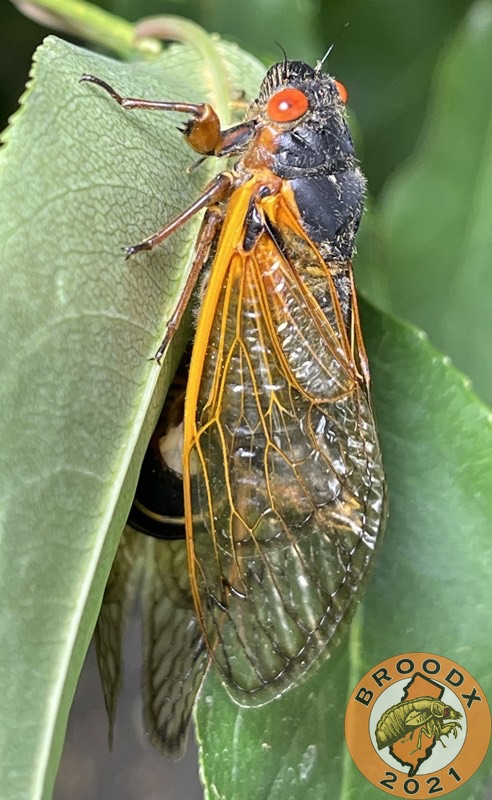
Magicicada septendecim:
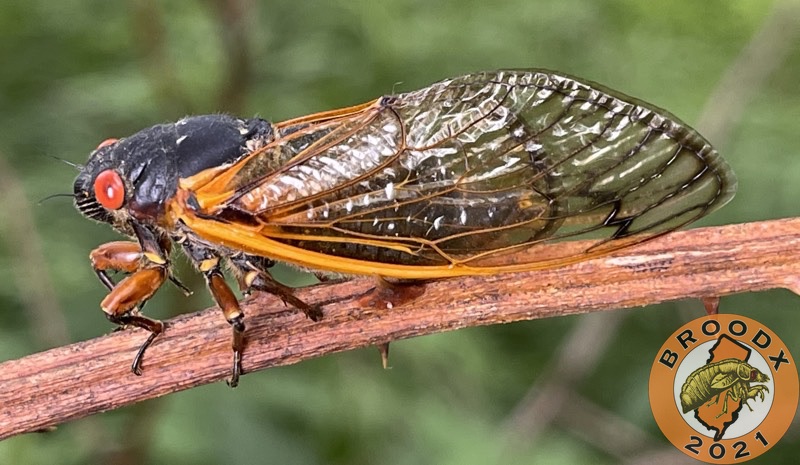
Here’s the second set of Brood X Magicicada septendecim photos by Jim Occi. The photos were taken in New Jersey in 2021.
Magicicada septendecim:
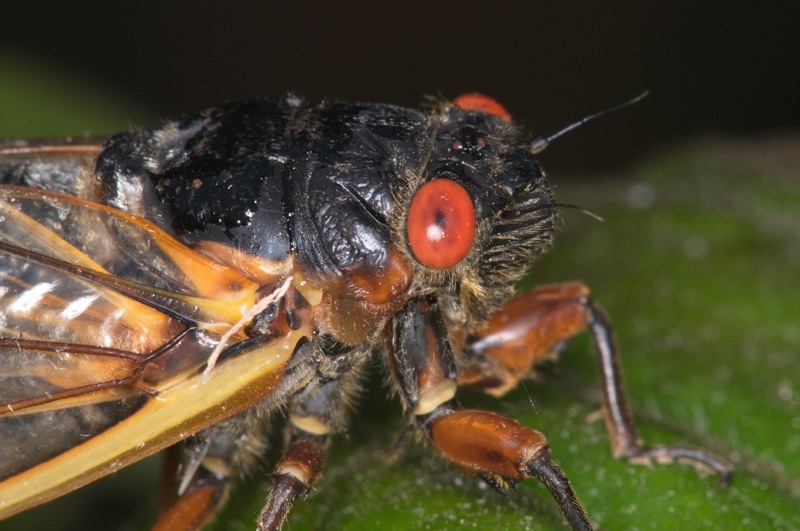
Magicicada septendecim:
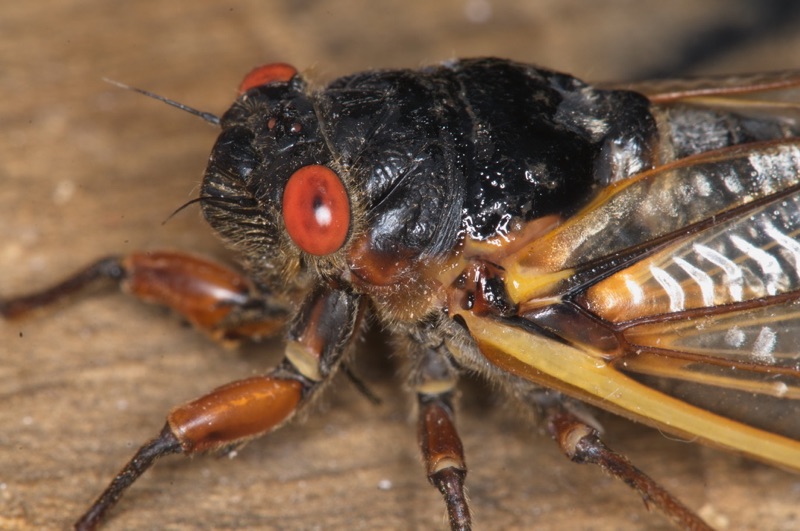
Magicicada septendecim:
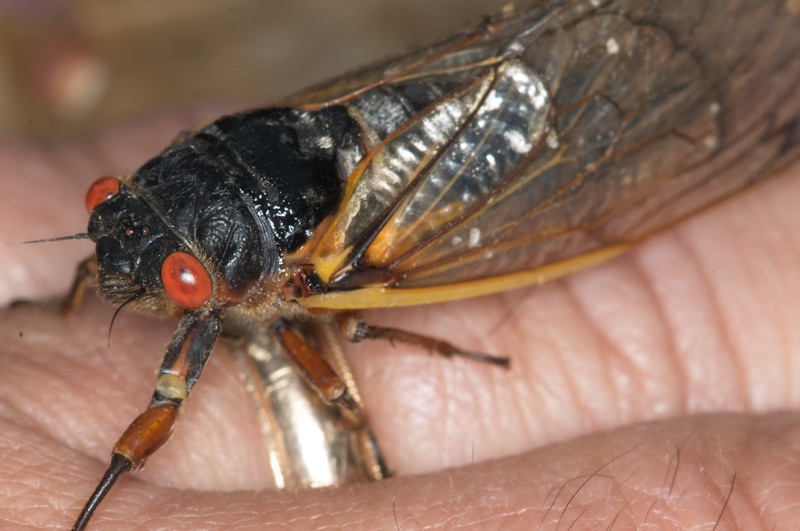
Magicicada septendecim:
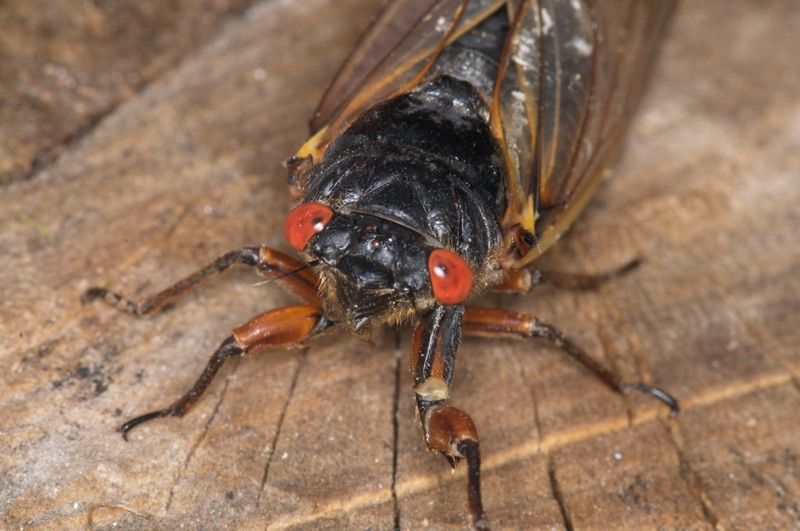
More photos by Jim:
Jim Occi has contributed photos to Cicada Mania since the 2004 Brood X emergence.
Here are 5 photos from the recent Brood X emergence in New Jersey:
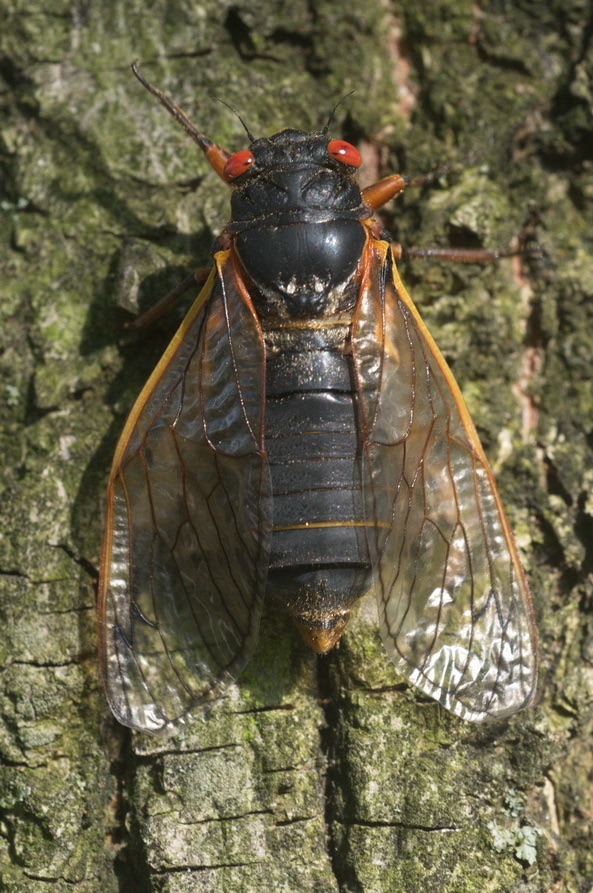
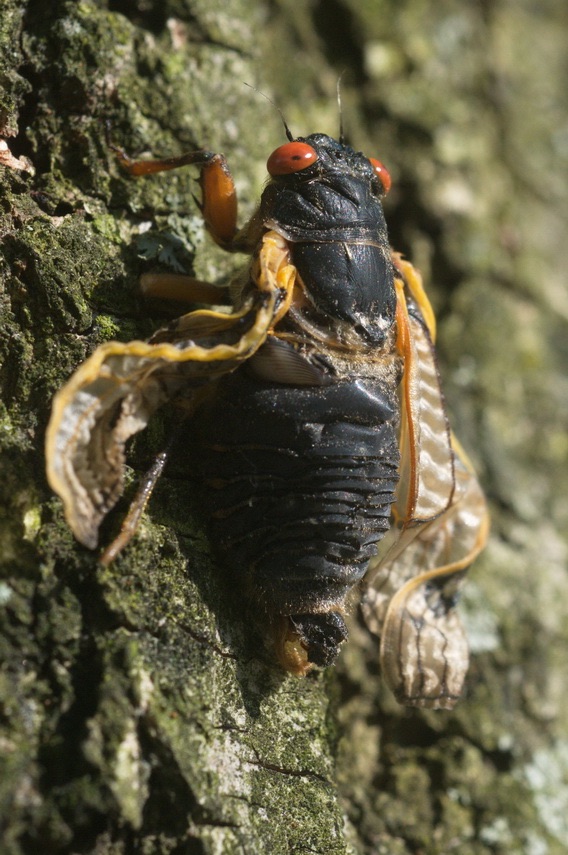
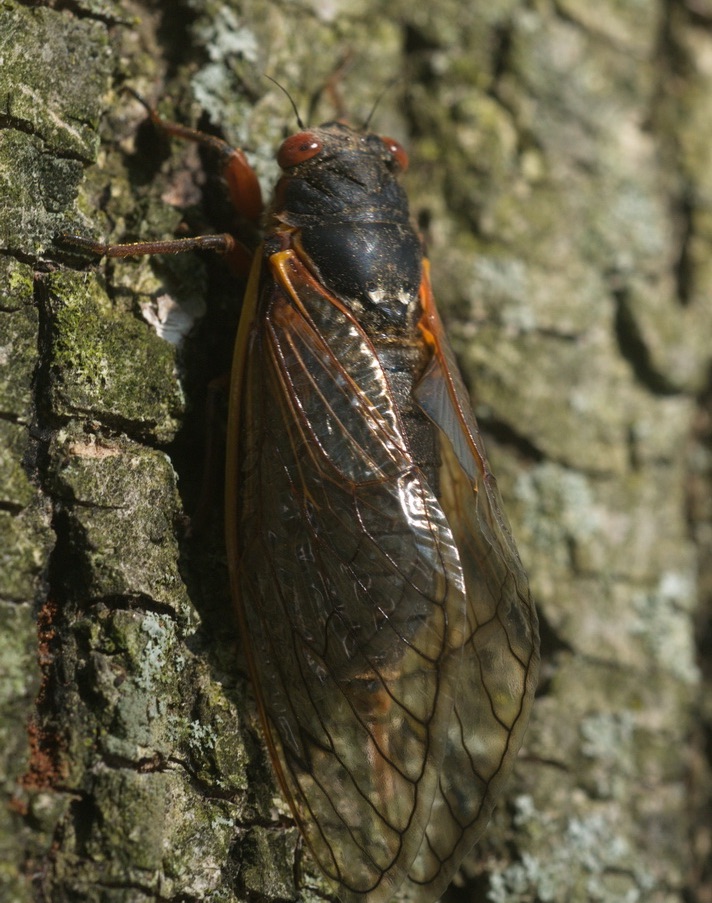
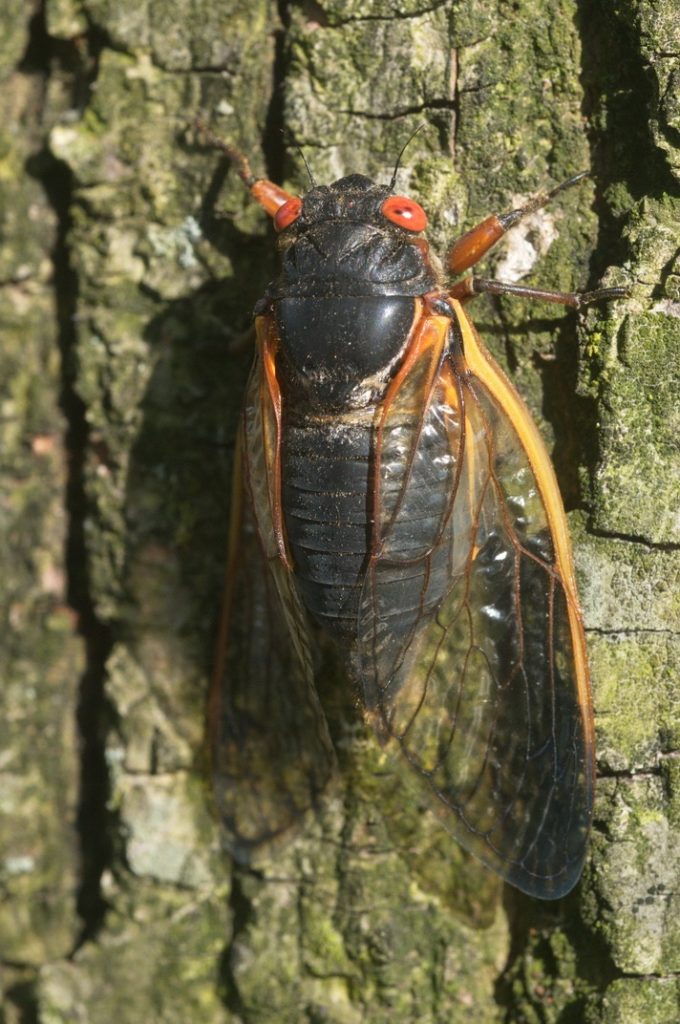
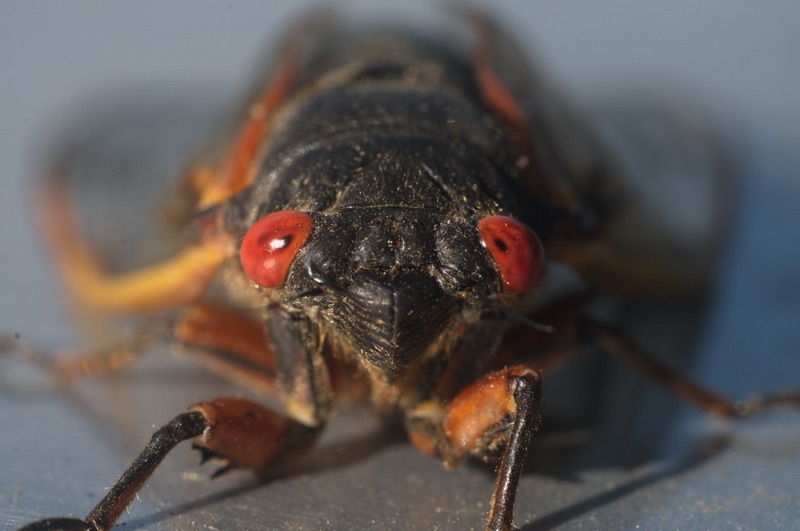
More photos by Jim:
The Princeton Battlefield (historical location of one of George Washington’s battles) has always been a great place to find Brood X periodical cicadas.
Here are a few photos I took last weekend:
A female Magicicada septendecim with white eyes & costal wing margin mating:
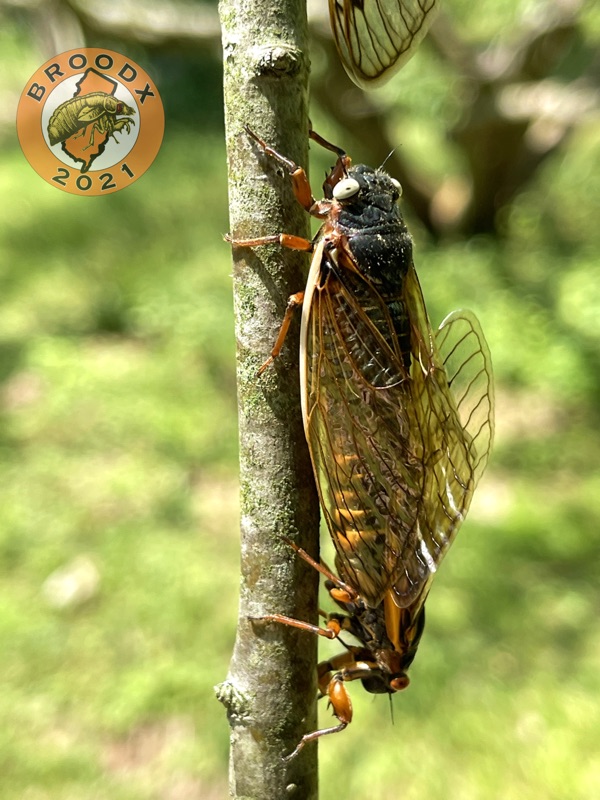
A female Magicicada septendecim with white eyes & costal wing margin:

Magicicada with beige eyes:
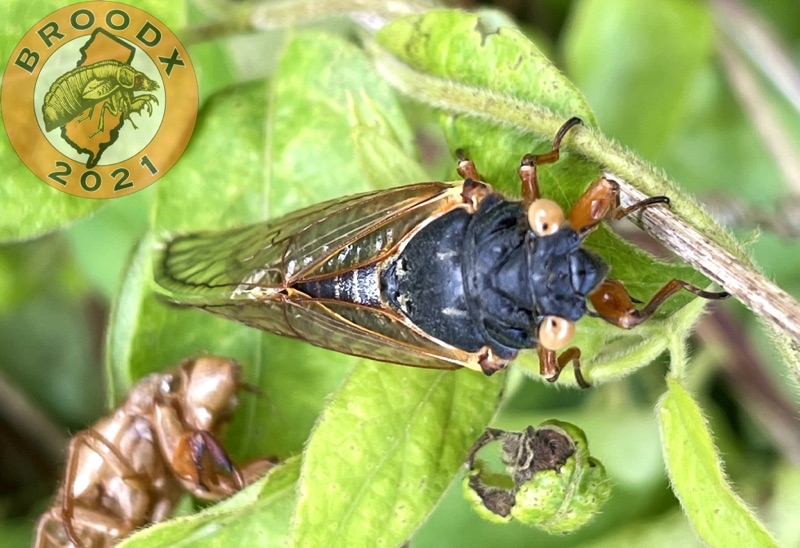
Many, many exit holes:
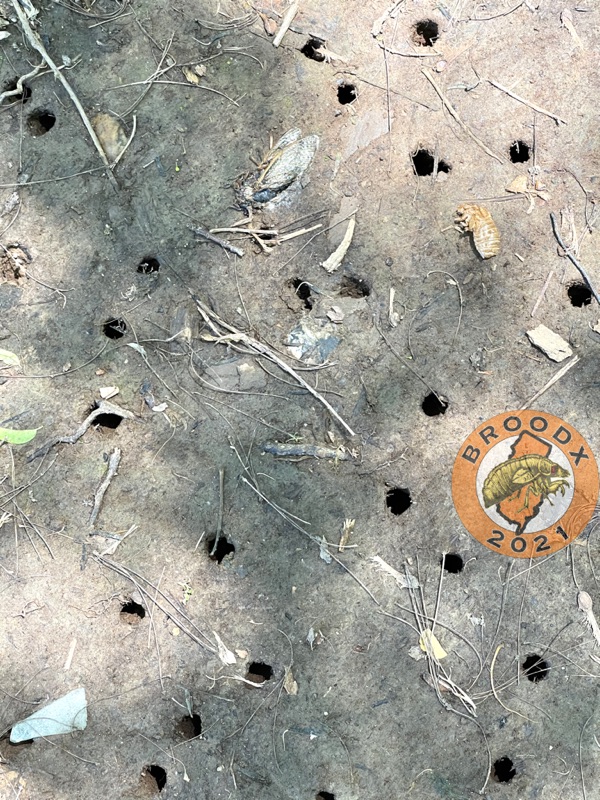
Triple exit holes in mud (kinda looks like a skull):
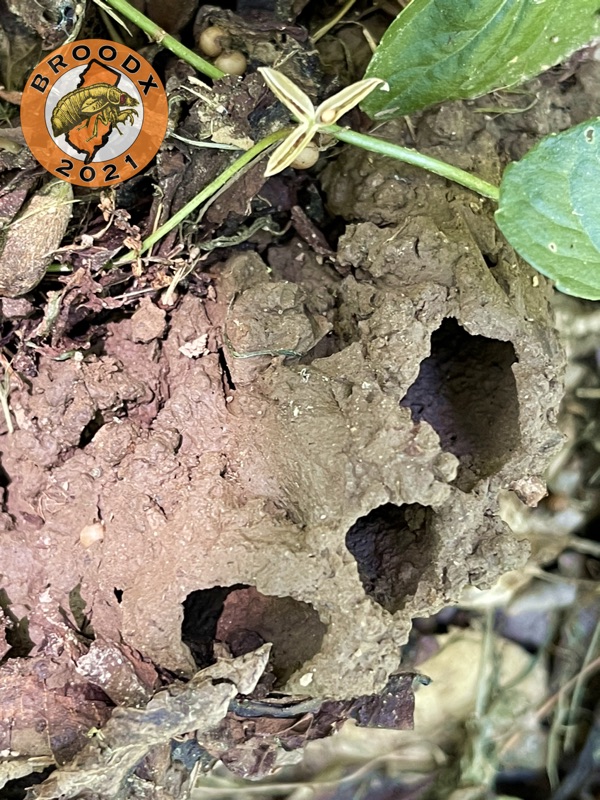
Egg nests carved into branches by the cicadas ovipositor:
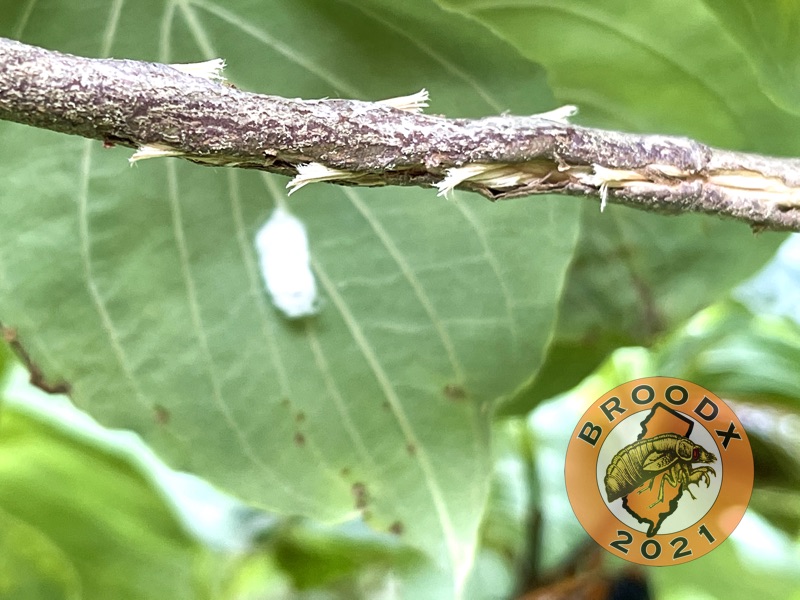
Brood X has emerged in Princeton, New Jersey, but the weather is currently not great for cicadas: less than 50°F and rainy. Undaunted, I visited Princeton yesterday to observe Magicicada cicada behavior on a cold, rainy day.
I arrived at Princeton Battleground State Park around 3:30 PM and immediately head to the short trees and tall weeds, like honeysuckle, that line the perimeter of the park. I was pleased to see hundreds of cicadas clinging to the leaves, stems, and branches of the plants — seemingly without extra effort or discomfort. Many were weighted down by droplets of rain, which seemed to roll off their bodies and bead on their wings like translucent pearls.
Even though temperatures were below 50°F I did hear an occasional distress call, and saw plenty of cicadas mating — perhaps they started mating before the rain and cold weather began. No flying. No calls, chorusing, or wing flicks.
Other than thousands of seemingly healthy but (patient) cicadas hanging from vegetation, there were plenty of malformed cicadas on the trunks of larger trees, and piles of exuvia and corpses circling tree trunks. The air around trees stank like ammonia and rotting fat and meat — not unlike a dumpster behind a burger restaurant.
I saw mostly Magicicada septendecim and some Magicicada cassini. No apparent Magicicada septendecula. I saw just one M. Septendecim infected with Massospora cicadina fungus. While there was plenty of avian activity in the area, I did not see any birds or other creatures feast on the docile or dead cicada — maybe I scared them away — maybe their appetites were satiated.
Cicadas dripping with rain:
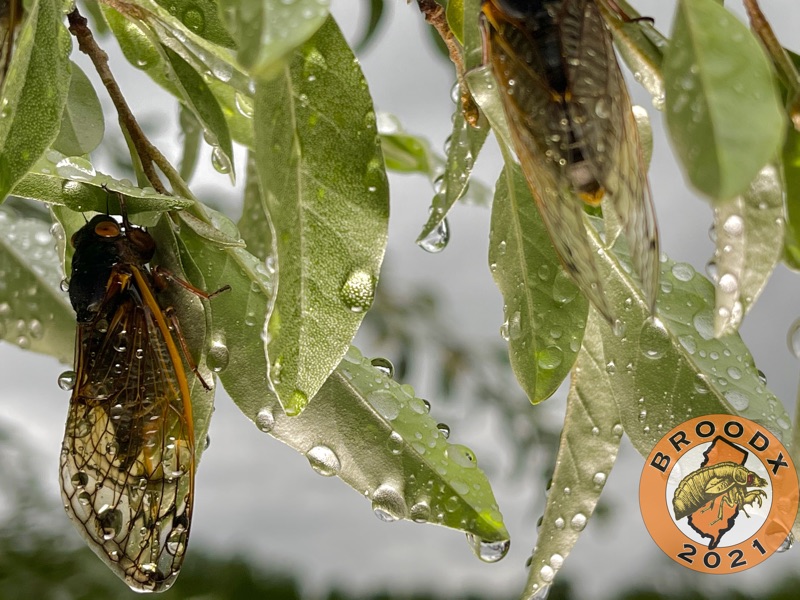
Cicadas mating:
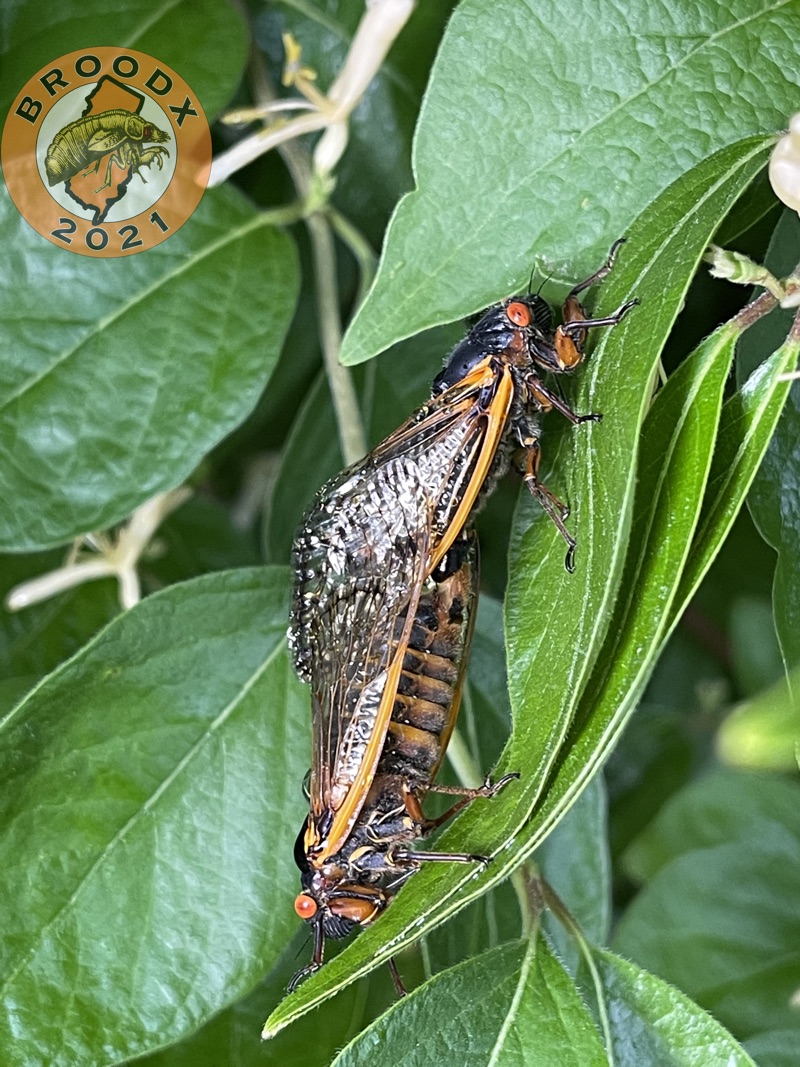
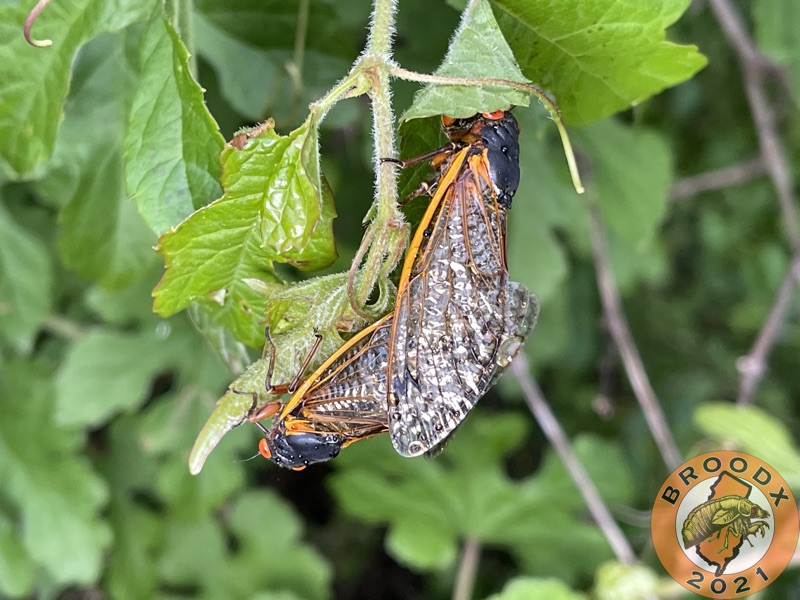
M. Septendecim infected with Massospora cicadina fungus:
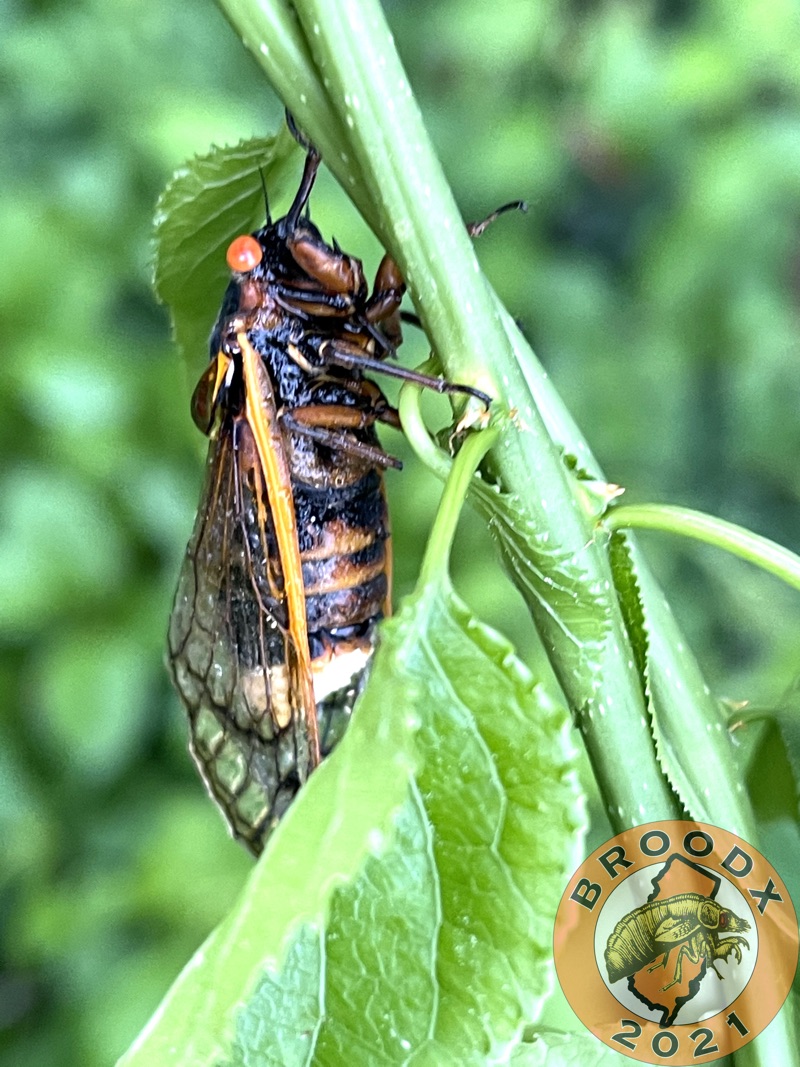
I’m surprised that this is the first rap song about Brood X I’ve heard so far.
Brood X-ellence, a rap about Brood X by EntoGeek. It’s pretty good.
On May 23rd I made it out to eastern Mercer County, New Jersey to too look for Brood X cicadas. Specifically, I made it out to West Windsor Township, its famous neighborhood Gover’s Mill, and nearby Plainsboro Township.
Overall the emergence in the area was underwhelming. Some holes, some exuvia (skins), and even fewer cicadas. Throughout the area, I heard individual calls by Magicicada septendecim and Magicicada cassini, but no choruses. I was there between noon and 5 pm. The temperature was somewhere between 85 and 90 degrees fahrenheit. The soil and air were very dry.
The best location was Van Nest Park in Grover’s Mill (in West Windsor). There, every suitable tree had a dozen or more exit holes around its roots. Most trees had at least 12 exuviae on them, and a few had cicadas crawling in them.
Van Nest Park is best known for the War of the World’s monument on its grounds. In this photo, Orson is sharing a mic with a cicada:
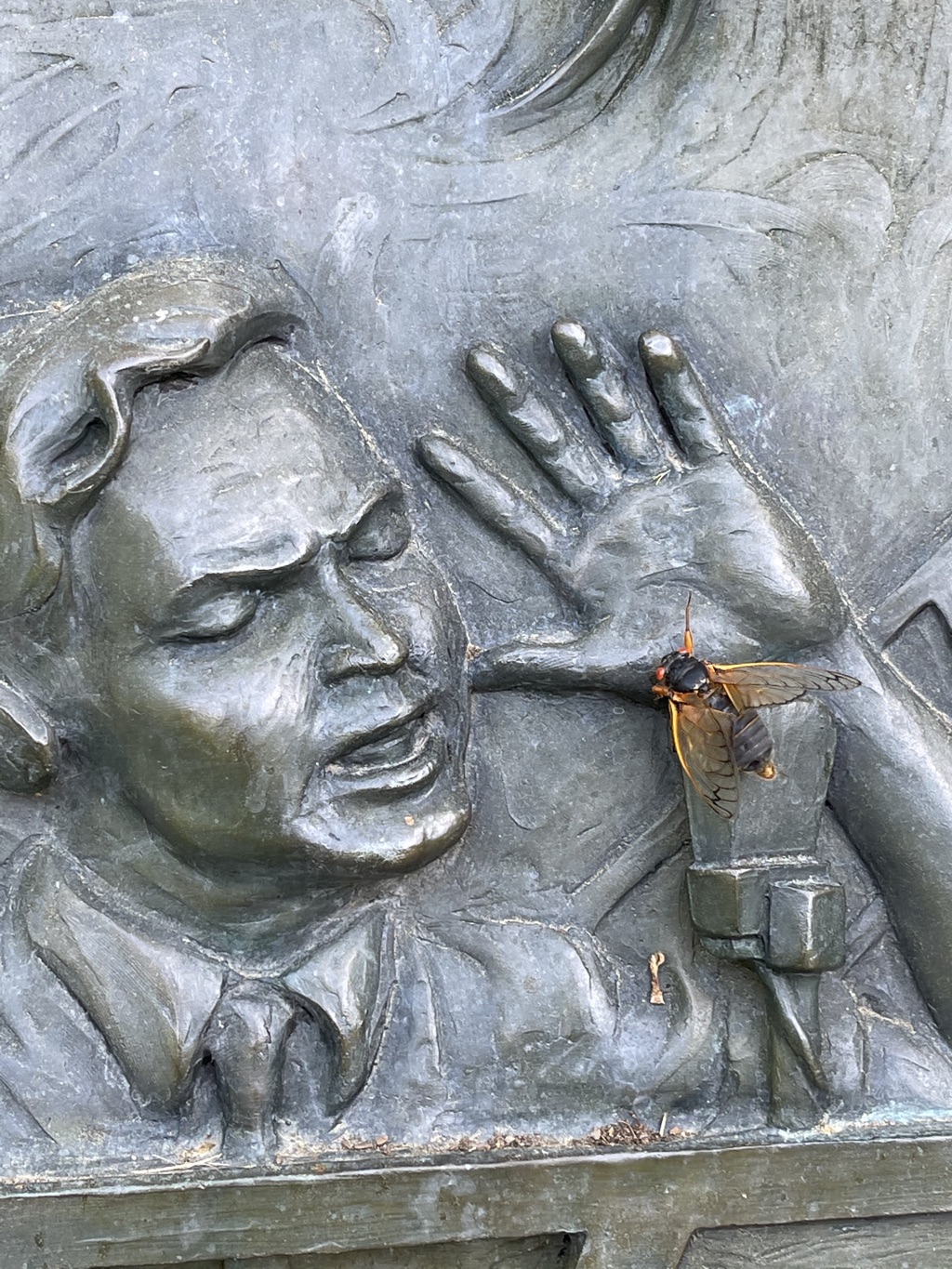
It breaks my heart to see cicadas with shriveled wings. This one was in Van Nest Park:
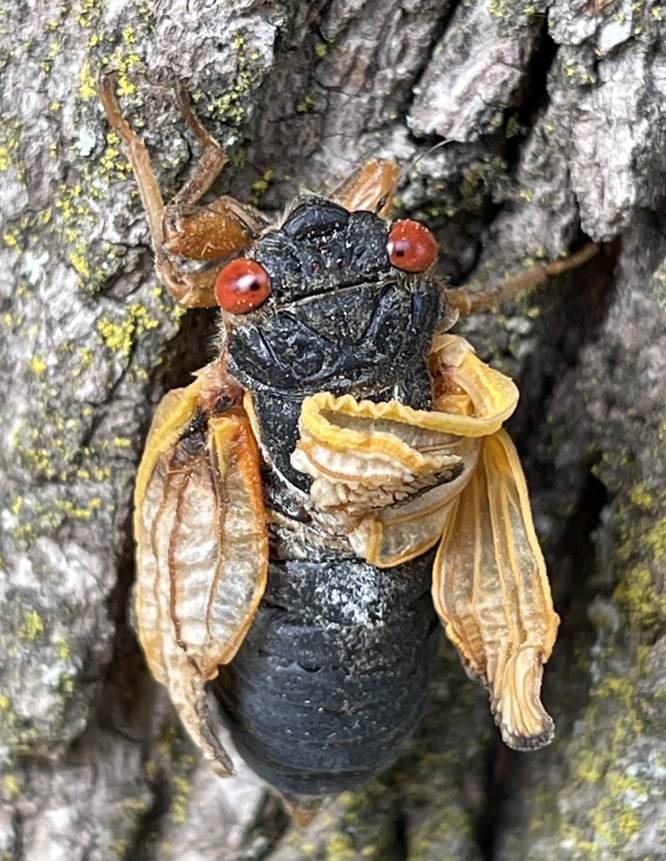
Ronald Roger’s Arboretum, also in West Windsor, had plenty of exit holes along its hiking trails, but very few exuviae, and only one audible singing Magicicada septendecim.
In Plainsboro, the Lenape Trail offered nothing in terms of cicadas, but I could hear cicadas singing nearby. Waters Edge Park had exuviae hanging from tree leaves, but no visible adult cicadas, and a few audible M. septendecim. I did see one fisherman using a cicada for bait.
Either the Brood X emergence was very light in this area, and most were wiped out by birds, or it is still early. I will do my best to check this location again to be sure.
Picture semi-related:

Brood X will emerge in 2021, and people will want to travel to see and hear them. Should you decide to travel to witness Brood X or any cicada emergence in the U.S., be cautious and considerate of the following:
Periodical cicadas thrive in neighborhoods and campuses with old hardwood trees and grass lawns, as you’ll find in places like Princeton, New Jersey. Don’t traipse and trample onto private property without permission and always visit local parks, instead of neighborhoods, when possible.
This should go without saying: obey local laws. Do not: litter, trespass, speed, j-walk, etc. Don’t give cicada fans a bad name.
Be prepared to practice social distancing and to wear a mask, even if just as a courtesy. I noticed that even outdoors in public parks, people in New Jersey wear masks.
Spotted Lanternflies are true bugs, just like cicadas, but they are very, very destructive pests and an “invasive species”. Like the Pennsylvania Department of Agriculture website says, they “cause serious damage including oozing sap, wilting, leaf curling, and dieback in trees, vines, crops and many other types of plants”! They kill the trees cicadas call home.
Pennsylvania and western New Jersey are loaded with Spotted Lanternflies, so if you travel to those states to see Brood X cicadas, make sure you check your vehicle and belongings for Lanternfly hitchhikers. Don’t bring them home with you. At this time of year, I believe they are still in their black phase.
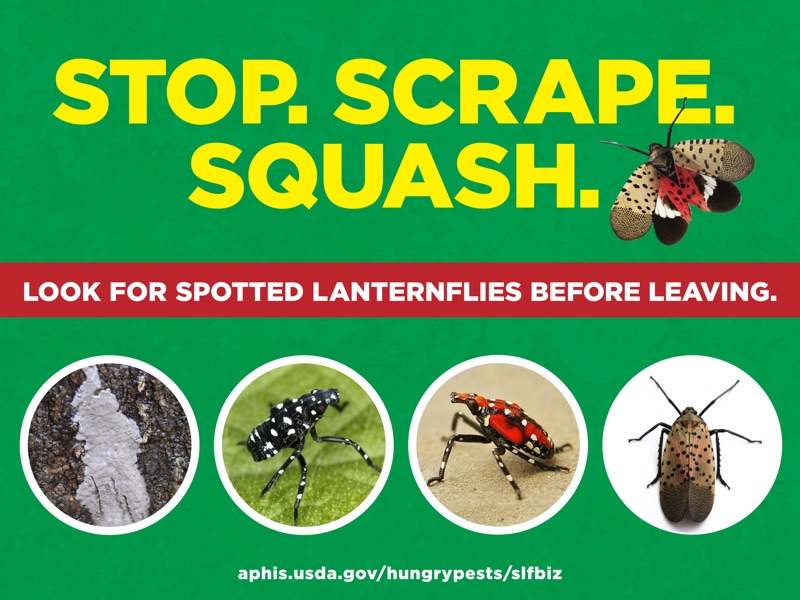
This sign is downloadable from the USDA website.
And squash them all — for the good of the forest and cicadas.
More info at the USDA website.
Long Island (NY), New Jersey, Pennsylvania, and nearby states are loaded with Lyme Disease carrying Blacklegged/Deer Ticks. I’ve known people who have Lyme Disease and it practically ruined their lives. Unfortunately, ticks are found in the same areas as cicadas, like parks, yards, and forests. The CDC website has tips for preventing tick bites on people that I highly recommend you read and follow their tips. I personally wear pyrethrum-treated clothes when outdoors in New Jersey.
From the CSC.gov website:
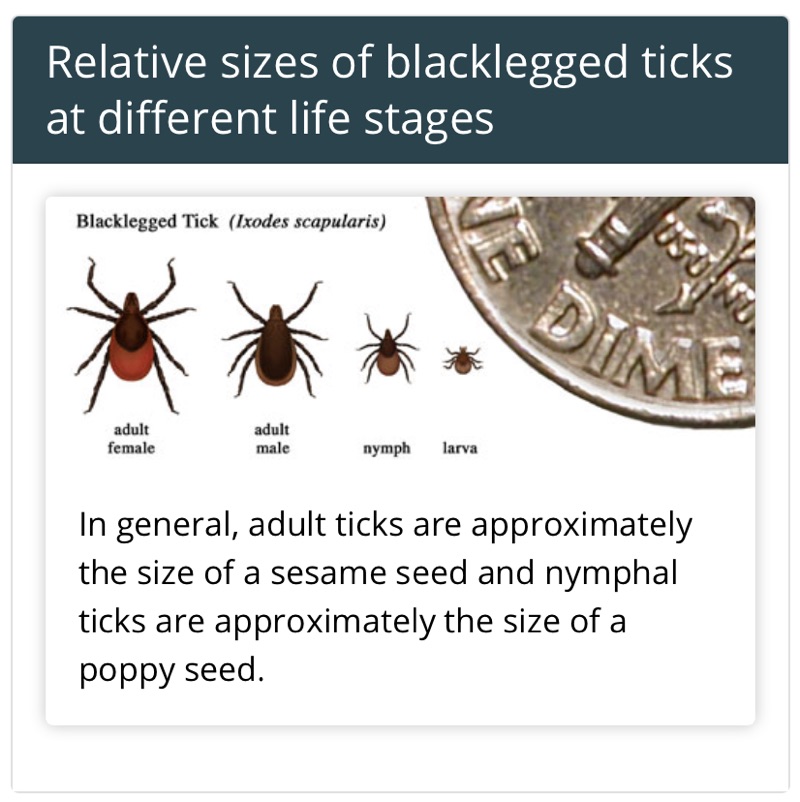
Different types of Magicicada periodical cicada holes found in Princeton, NJ. Brood X, 2021. Generally speaking, their holes are about the size of a dime. You won’t see a spray or kickback of soil around the hole like you would when an animal is digging into the soil rather than coming out of it (cicadas are coming out).
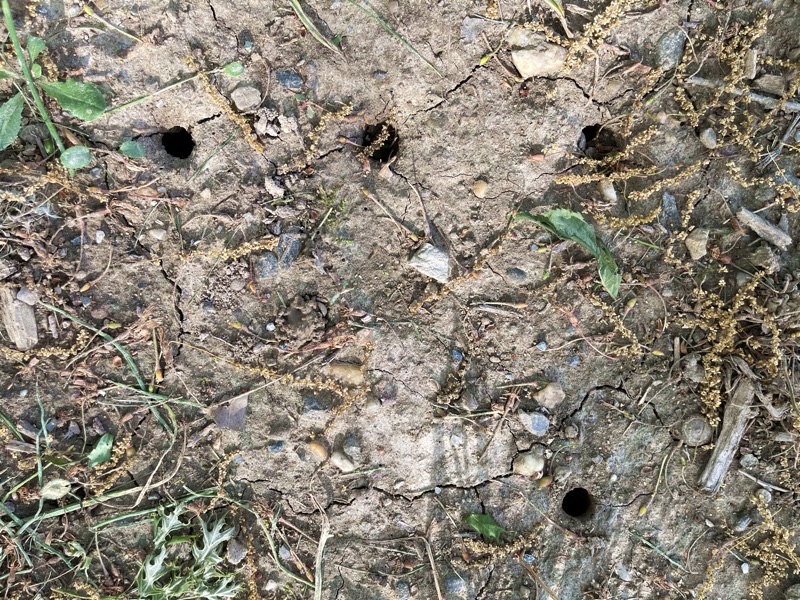

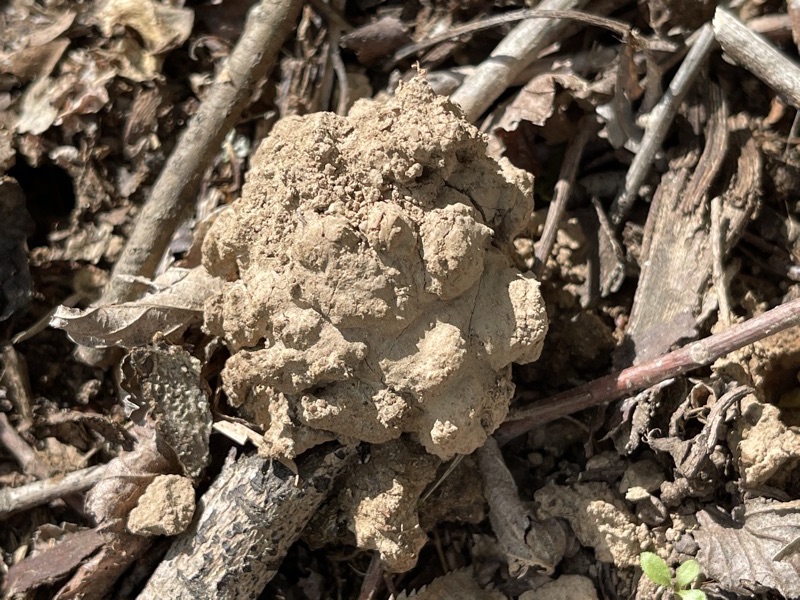
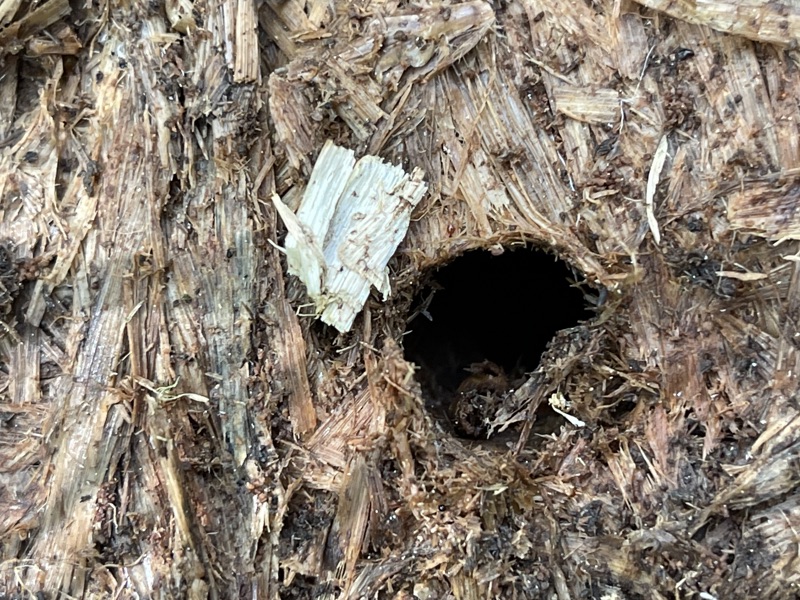
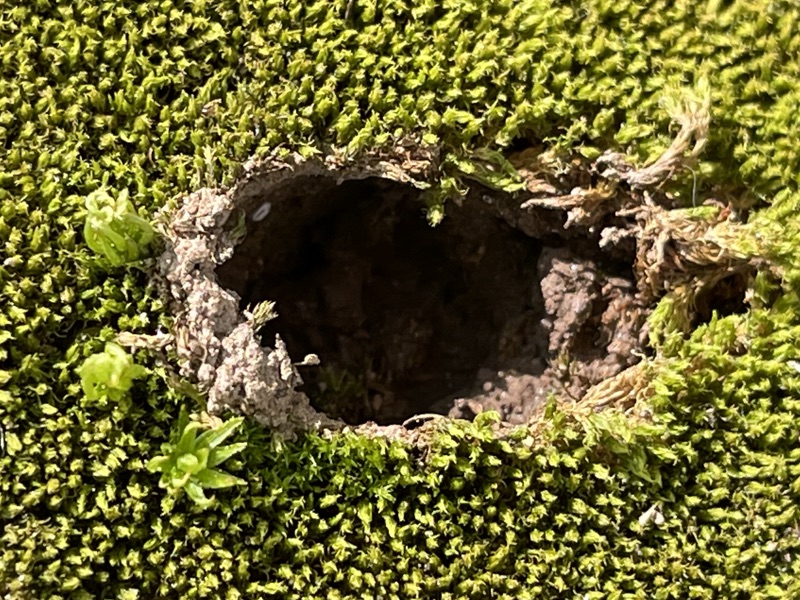
Cicadas will burrow up from the soil of the ground and keep going into the rotting wood of a rotten log! I had to roll the log over to see it.
